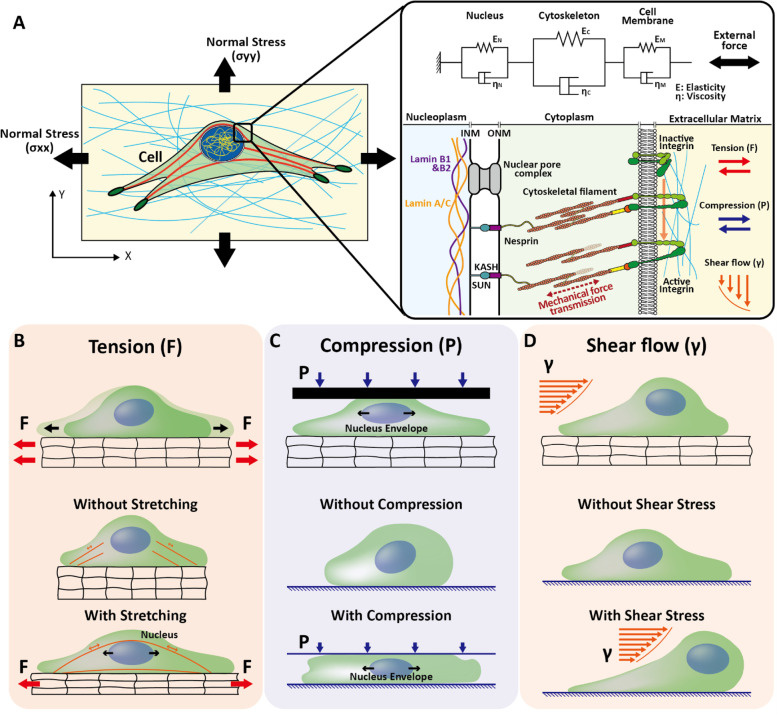Fig. 2.
Schematic representation of forces transferred from extracellular matrix to nucleus. A The schematic representation of normal stress (x direction) and normal stress (y direction) on ECM. Detailed linkers of nucleoskeleton and cytoskeleton (LINC) propagates forces from extracellular matrix to nucleoplasm. Nucleoplasm domain contain nuclear envelope-associated proteins that interact with nuclear lamins. The extracellular matrix (ECM)-applied forces transfer to the nucleoplasm through cytoplasm, KASH domain protein from inner nuclear membrane (INM), and outer nuclear membrane (ONM) and enter the nucleoplasm containing SUN protein and lamins. Viscoelastic mechanical representation of Kelvin–Voigt modal (K–V) when external forces transfer from ECM to nucleus. B Schematic representation of the forces transferred from ECM to nucleus when ECM is subjected to tensile forces. C Schematic representation of forces transferred from ECM to nucleus when cell is subjected to compression forces during migration through unconfined, low confined, and strong confinement passage. D Schematic representation of cells on extracellular matrix during shearing flow and corresponding nucleus deformation (in deforming and peeled off) state, respectively

